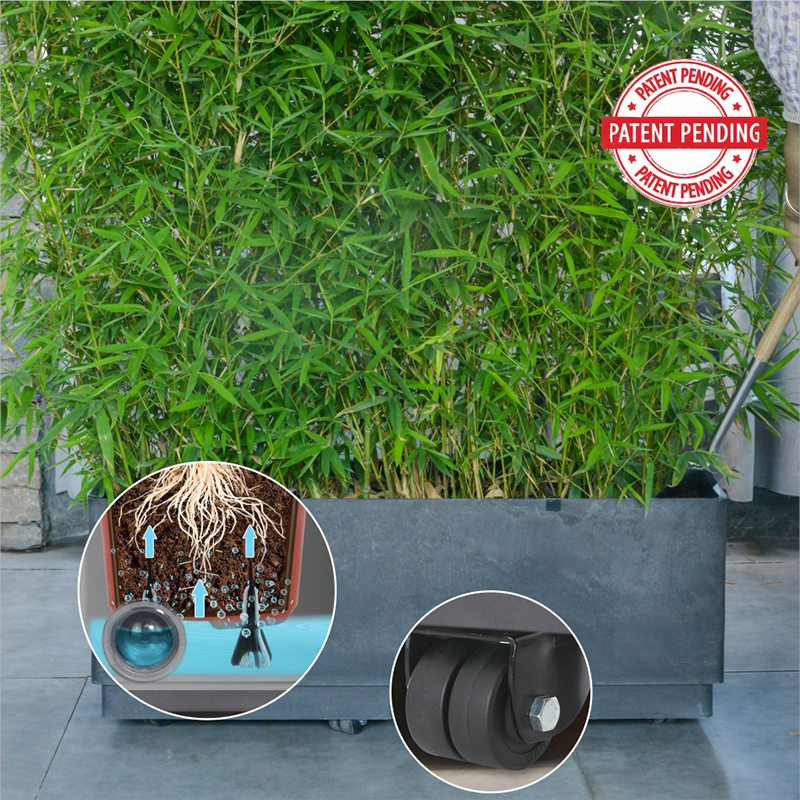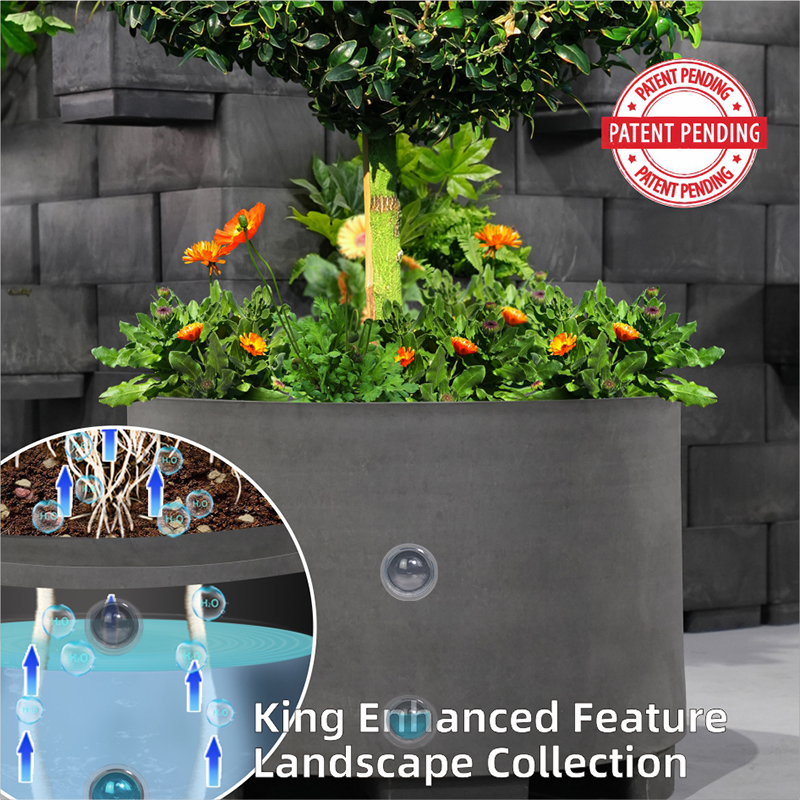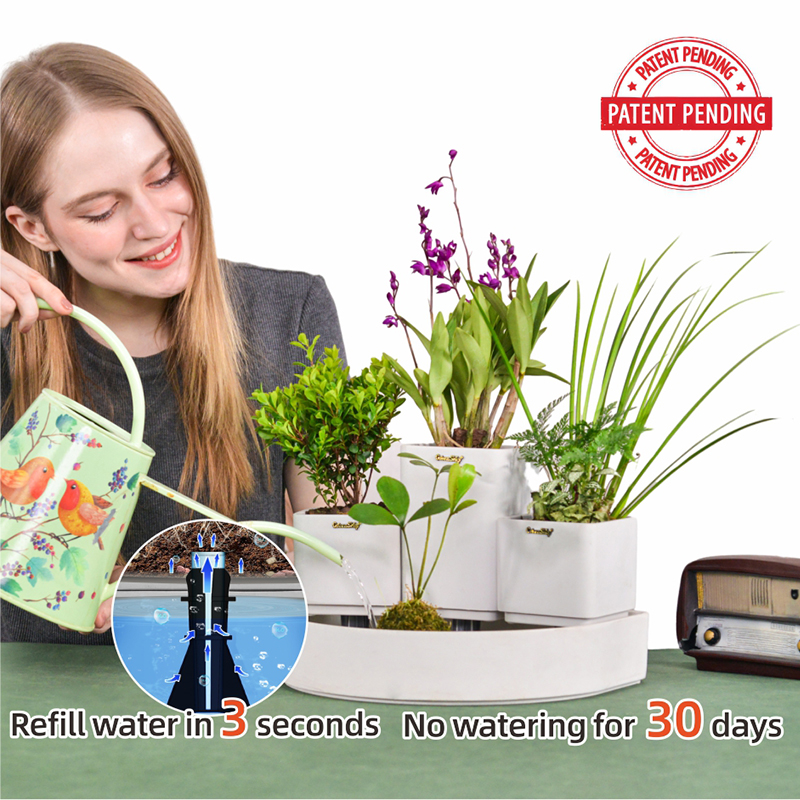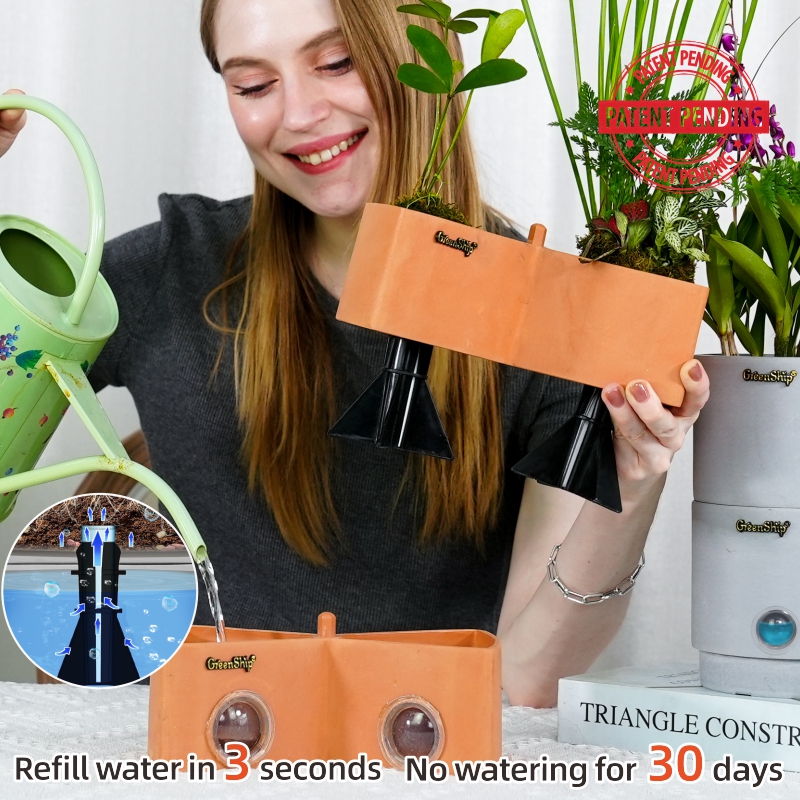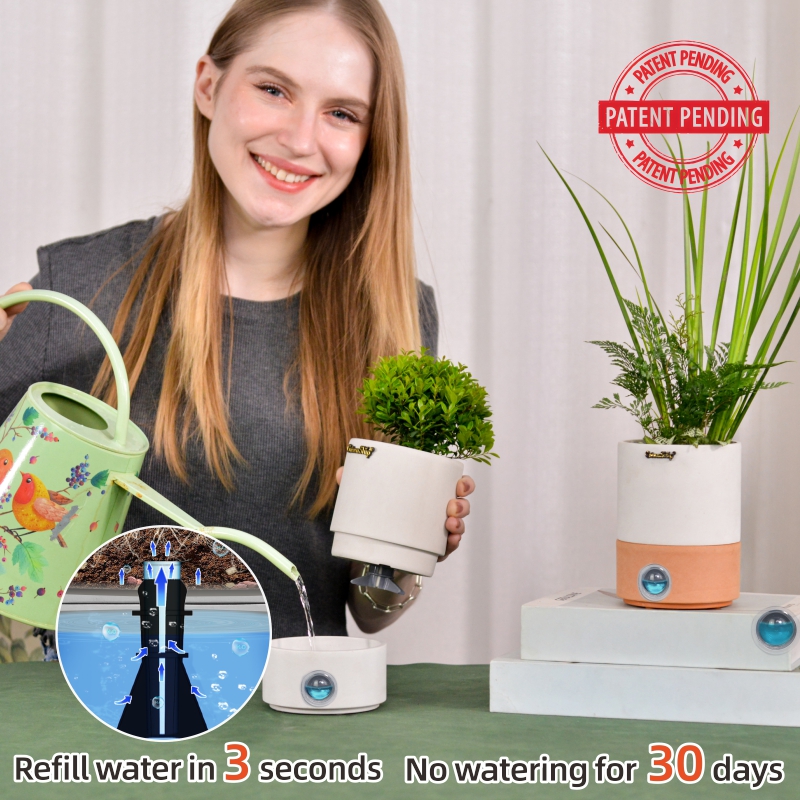What Do You Put in the Bottom of Self-Watering Pots?
When setting up a self-watering pot, it’s important to understand how the system works to ensure optimal plant health and proper moisture management. Unlike traditional pots, which may require added materials like rocks or gravel at the bottom for drainage, self-watering pots have a built-in mechanism designed to take care of watering automatically. Here’s what you need to know about what to put (or not put) in the bottom of your self-watering pot.

Typical Setup of a Self-Watering Pot:
- Water Reservoir: The bottom section of a self-watering pot serves as a water reservoir. This area holds water that the plant will access as needed. The water reservoir is the key feature of self-watering pots, providing a steady supply of moisture without the need for frequent watering.
- Inner Pot (Planting Container): Above the water reservoir sits the inner pot, where you plant your plant. This pot holds the soil and provides space for the roots to grow. It sits elevated above the water reservoir, allowing the roots to absorb moisture through the wicking system.
- Wicking System: A wicking material—often fabric or some other porous material—connects the inner pot to the water reservoir. This material draws water up from the reservoir into the soil, allowing the plant’s roots to absorb moisture when needed. The wicking action ensures that the soil stays consistently moist but not waterlogged.

Key Points to Remember:
- No Extra Materials Needed: In most self-watering pots, you don’t need to add anything to the bottom of the pot. The system is designed to function with just the water reservoir, the inner pot, and the wicking material. Adding rocks, pebbles, or gravel is not necessary and can interfere with the water distribution process.
- Good Drainage Is Essential: While you don’t need to add materials to the bottom of the pot, it’s important to ensure the inner pot has adequate drainage holes. These holes prevent water from stagnating in the pot and allow excess moisture to escape, which helps avoid root rot. Make sure the inner pot has proper drainage to maintain a healthy root environment.
- Use the Right Potting Mix: The type of soil you use in your self-watering pot is crucial for the system to work effectively. A well-draining potting mix will allow the water to move up through the wicking system without becoming waterlogged. Avoid heavy, dense soils that retain too much moisture, as this can lead to root rot or fungal issues.

Conclusion:
In self-watering pots, you generally don’t need to add anything to the bottom of the pot besides the built-in water reservoir and the appropriate wicking material. Focus on ensuring that the pot has good drainage, and choose a potting mix that allows water to move freely through the soil. By following the manufacturer’s instructions and setting up your self-watering system correctly, you can enjoy healthier plants with less maintenance.

